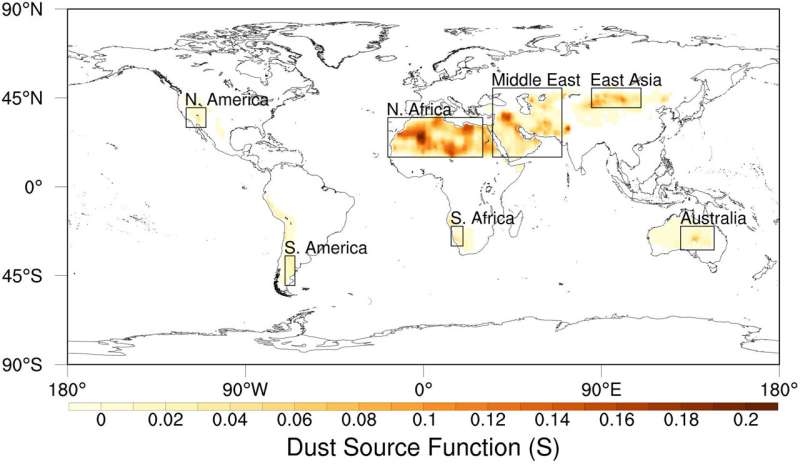This article has been reviewed according to Science X's editorial process and policies. Editors have highlighted the following attributes while ensuring the content's credibility:
fact-checked
proofread
Constructing a global variable-resolution atmospheric physico-chemical coupling simulation framework

A research team led by Prof. Zhao Chun from the University of Science and Technology of China (USTC) of the Chinese Academy of Sciences (CAS) has developed a global variable-resolution modeling framework and conducted research using atmospheric sand and dust as a case study. The results were published in Journal of Advances in Modeling Earth Systems.
Atmospheric dust aerosols play a critical role in the Earth's climate system. However, numerical modeling of dust aerosols still faces significant uncertainties due to limitations in horizontal resolution. Previous studies have typically employed downscaling methods for regional high-resolution simulations. But this approach can introduce boundary issues and restrict the interaction between regional atmospheric dust and large-scale circulation.
Simulating dust aerosols using a global variable-resolution atmospheric model with regional refinement capabilities offers an alternative that avoids the use of boundary conditions and is computationally more efficient than a global high-resolution model.
In this study, the research team constructed a framework for modeling segmented refined aerosols and their feedback effects based on the power kernel of the global variable-grid atmospheric model MPAS. The model provides a more accurate spatial distribution of dust and sand compared to observations and previous studies.
Furthermore, this research achieved the first dust simulation at a convectively resolved scale (4km) within a global framework. The results indicate that convectively resolved scale simulations enhance the wet scavenging efficiency of dust and reduce the dust mass concentration by resolving the convective precipitation process.
This study presents a new model framework that allows us to uncover the mechanisms behind aerosol impacts on regional and global weather and climate systems. Building on this foundation, future work will continue to develop physical and chemical parameterizations, optimize AI-based model performance, and delve deeper into these mechanisms.
More information: Jiawang Feng et al, Simulating Atmospheric Dust With a Global Variable‐Resolution Model: Model Description and Impacts of Mesh Refinement, Journal of Advances in Modeling Earth Systems (2023). DOI: 10.1029/2023MS003636
Provided by University of Science and Technology of China

















